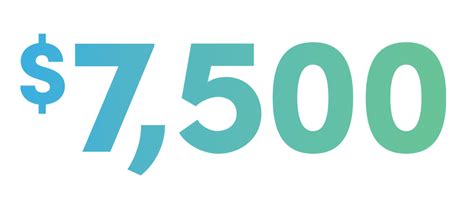As the world increasingly shifts its focus toward sustainable energy and reduced carbon footprints, electric vehicles (EVs) have emerged as a key component in this transformation. Leading the charge in this movement is Oregon’s Charge Ahead Rebate program, designed to incentivize the adoption of electric vehicles. This article delves into the specifics of the Charge Ahead Rebate, its implications for the environment, and how it serves as a powerful boost for EV adoption in Oregon.
Understanding the Charge Ahead Rebate
Launched by the Oregon Department of Environmental Quality, the Charge Ahead Rebate program aims to make electric vehicles more accessible to Oregonians, particularly those with lower incomes. By offering financial rebates for the purchase or lease of new or used electric vehicles, the program alleviates some financial barriers associated with transitioning to electric transportation.
How the Program Works
Eligible Oregonians can receive rebates of up to $2,500 for purchasing or leasing an electric vehicle. The program is targeted at individuals or families earning up to 400% of the federal poverty level, ensuring that those in lower income brackets can also benefit from the switch to electric. The program isn’t just about new cars; it also covers the purchase of used electric vehicles, making it a versatile option for varied financial situations.
Environmental Benefits
The adoption of electric vehicles plays a significant role in reducing greenhouse gas emissions and other pollutants emitted by traditional gasoline or diesel vehicles. With Oregon’s commitment to a sustainable future, the Charge Ahead Rebate program aligns well with state-wide environmental goals, including reducing the overall carbon footprint. By making EVs more financially accessible, the program encourages more residents to shift away from fossil fuel reliance.
Boosting Local Economies
Beyond environmental advantages, the Charge Ahead Rebate program has the potential to invigorate local economies. As more Oregonians adopt electric vehicles, related industries—such as charging infrastructure, maintenance, and EV manufacturing—stand to benefit. This influx of interest can lead to job creation in sectors associated with sustainable technologies, thus stimulating local economies and fostering innovation.
Charging Infrastructure Expansion
One of the challenges hindering widespread EV adoption is the availability of charging stations. Oregon has been committed to addressing this through various initiatives. The Charge Ahead Rebate program complements these efforts by encouraging not just car purchases but also fostering an ecosystem where infrastructure can thrive. The presence of more EVs on the road drives the demand for charging stations, leading to an expanded network that ultimately supports both current and future electric vehicle owners.
Success Stories
Oregon’s Charge Ahead Rebate program has seen multiple success stories from residents benefiting from the initiative. Families who previously struggled to adapt due to financial constraints can now consider electric vehicles as a viable option. Testimonials highlight not only the financial relief but also the satisfaction of contributing to environmental conservation. These stories create a ripple effect, inspiring others in the community to consider electric vehicles as a practical choice.
Conclusion
Oregon’s Charge Ahead Rebate program offers a groundbreaking opportunity for residents to adopt electric vehicles while contributing to environmental sustainability. By providing financial incentives, expanding charging infrastructure, and promoting local economic growth, the program addresses several barriers to EV adoption. As more Oregonians join the electric vehicle movement, the benefits will extend beyond individual households, fostering a greener, cleaner future for all. The Charge Ahead Rebate stands as a testament to Oregon’s commitment to sustainable practices and offers an encouraging blueprint for other states to follow.
FAQs
1. Who is eligible for the Charge Ahead Rebate?
Eligibility extends to Oregon residents who earn up to 400% of the federal poverty level and are purchasing or leasing new or used electric vehicles.
2. How much is the rebate?
The rebate can be up to $2,500 for qualifying purchases or leases of electric vehicles.
3. Is the program limited to new electric vehicles?
No, the Charge Ahead Rebate program also covers used electric vehicles, increasing accessibility for all income levels.
4. How can I apply for the rebate?
Applications for the Charge Ahead Rebate can generally be made through the Oregon Department of Environmental Quality’s website or specific participating dealers.
5. Are there any additional programs for charging infrastructure?
Yes, Oregon is implementing various initiatives to expand charging infrastructure alongside the Charge Ahead Rebate program, encouraging growth in the EV ecosystem.
Download Oregon Charge Ahead Rebate
